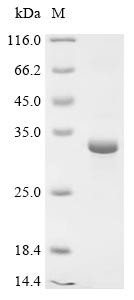Cookie preferences
This website uses cookies, which are necessary for the technical operation of the website and are always set. Other cookies, which increase the comfort when using this website, are used for direct advertising or to facilitate interaction with other websites and social networks, are only set with your consent.
Configuration
Technically required
These cookies are necessary for the basic functions of the shop.
"Allow all cookies" cookie
"Decline all cookies" cookie
CSRF token
Cookie preferences
Currency change
Customer-specific caching
FACT-Finder tracking
Individual prices
Selected shop
Session
Comfort functions
These cookies are used to make the shopping experience even more appealing, for example for the recognition of the visitor.
Note
Show the facebook fanpage in the right blod sidebar
Statistics & Tracking
Affiliate program
Conversion and usertracking via Google Tag Manager
Track device being used

If you have any questions, please use our Contact Form.
You can also order by e-mail: info@biomol.com
Larger quantity required? Request bulk
You can also order by e-mail: info@biomol.com
Larger quantity required? Request bulk
Organism: Homo sapiens (Human). Source: E.coli. Expression Region: 21-244aa. Protein Length: Full... more
Product information "Cathepsin G (CTSG), human, recombinant"
Organism: Homo sapiens (Human). Source: E.coli. Expression Region: 21-244aa. Protein Length: Full Length of Mature Protein. Tag Info: N-terminal 10xHis-tagged and C-terminal Myc-tagged. Target Protein Sequence: IIGGRESRPH SRPYMAYLQI QSPAGQSRCG GFLVREDFVL TAAHCWGSNI NVTLGAHNIQ RRENTQQHIT ARRAIRHPQY NQRTIQNDIM LLQLSRRVRR NRNVNPVALP RAQEGLRPGT LCTVAGWGRV SMRRGTDTLR EVQLRVQRDR QCLRIFGSYD PRRQICVGDR RERKAAFKGD SGGPLLCNNV AHGIVSYGKS SGVPPEVFTR VSSFLPWIRT TMRS. Purity: Greater than 90% as determined by SDS-PAGE. Endotoxin: n/a. Biological Activity: n/a. Form: Liquid or Lyophilized powder. Buffer: If the delivery form is liquid, the default storage buffer is Tris/PBS-based buffer, 5%-50% glycerol. If the delivery form is lyophilized powder, the buffer before lyophilization is Tris/PBS-based buffer, 6% Trehalose, pH 8.0. Reconstitution: We recommend that this vial be briefly centrifuged prior to opening to bring the contents to the bottom. Please reconstitute protein in deionized sterile water to a concentration of 0.1-1.0 mg/mL.We recommend to add 5-50% of glycerol (final concentration) and aliquot for long-term storage at -20 °C/-80 °C. Our default final concentration of glycerol is 50%. Customers could use it as reference. Storage: The shelf life is related to many factors, storage state, buffer ingredients, storage temperature and the stability of the protein itself. Generally, the shelf life of liquid form is 6 months at -20 °C/-80 °C. The shelf life of lyophilized form is 12 months at -20 °C/-80 °C. Notes: Repeated freezing and thawing is not recommended. Store working aliquots at 4 °C for up to one week. Relevance: Serine protease with trypsin- and chymotrypsin-like specificity. Also displays antibacterial activity against Gram-negative and Gram-positive bacteria independent of its protease activity. Prefers Phe and Tyr residues in the P1 position of substrates but also cleaves efficiently after Trp and Leu. Shows a preference for negatively charged amino acids in the P2' position and for aliphatic amino acids both upstream and downstream of the cleavage site. Required for recruitment and activation of platelets which is mediated by the F2RL3/PAR4 platelet receptor. Binds reversibly to and stimulates B cells and CD4(+) and CD8(+) T cells. Also binds reversibly to natural killer (NK) cells and enhances NK cell cytotoxicity through its protease activity. Cleaves complement C3. Cleaves vimentin. Cleaves thrombin receptor F2R/PAR1 and acts as either an agonist or an inhibitor, depending on the F2R cleavage site. Cleavage of F2R at '41-Arg-, -Ser-42' results in receptor activation while cleavage at '55-Phe-, -Trp-56' results in inhibition of receptor activation. Cleaves the synovial mucin-type protein PRG4/lubricin. Cleaves and activates IL36G which promotes expression of chemokines CXCL1 and CXLC8 in keratinocytes. Cleaves IL33 into mature forms which have greater activity than the unprocessed form. Cleaves coagulation factor F8 to produce a partially activated form. Also cleaves and activates coagulation factor F10. Cleaves leukocyte cell surface protein SPN/CD43 to releases its extracellular domain and trigger its intramembrane proteolysis by gamma-secretase, releasing the CD43 cytoplasmic tail chain (CD43-ct) which translocates to the nucleus. Cleaves CCL5/RANTES to produce RANTES(4-68) lacking the N-terminal three amino acids which exhibits reduced chemotactic and antiviral activities. During apoptosis, cleaves SMARCA2/BRM to produce a 160 kDa cleavage product which localizes to the cytosol. Cleaves myelin basic protein MBP in B cell lysosomes at '224-Phe-, -Lys-225' and '248-Phe-, -Ser-249', degrading the major immunogenic MBP epitope and preventing the activation of MBP-specific autoreactive T cells. Cleaves annexin ANXA1 and antimicrobial peptide CAMP to produce peptides which act on neutrophil N-formyl peptide receptors to enhance the release of CXCL2. Acts as a ligand for the N-formyl peptide receptor FPR1, enhancing phagocyte chemotaxis. Has antibacterial activity against the Gram-negative bacteria N.gonorrhoeae and P.aeruginosa. Likely to act against N.gonorrhoeae by interacting with N.gonorrhoeae penA/PBP2. Exhibits potent antimicrobial activity against the Gram-positive bacterium L.monocytogenes. Has antibacterial activity against the Gram-positive bacterium S.aureus and degrades S.aureus biofilms, allowing polymorphonuclear leukocytes to penetrate the biofilm and phagocytose bacteria. Has antibacterial activity against M.tuberculosis. Mediates CASP4 activation induced by the Td92 surface protein of the periodontal pathogen T.denticola, causing production and secretion of IL1A and leading to pyroptosis of gingival fibroblasts. Reference: n/a. Function: nan
| Keywords: | CG, CTSG, Cathepsin G, EC=3.4.21.20, Recombinant Human Cathepsin G (CTSG) |
| Supplier: | Cusabio |
| Supplier-Nr: | EP006190HU1 |
Properties
| Application: | Activity not tested |
| Conjugate: | No |
| Host: | E.coli |
| Species reactivity: | human |
| MW: | 32.9 kD |
| Purity: | >90% (SDS-PAGE) |
Database Information
| KEGG ID : | K01319 | Matching products |
| UniProt ID : | P08311 | Matching products |
| Gene ID : | GeneID 1511 | Matching products |
Handling & Safety
| Storage: | -20°C |
| Shipping: | +4°C (International: +4°C) |
Caution
Our products are for laboratory research use only: Not for administration to humans!
Our products are for laboratory research use only: Not for administration to humans!
You will get a certificate here
Viewed

